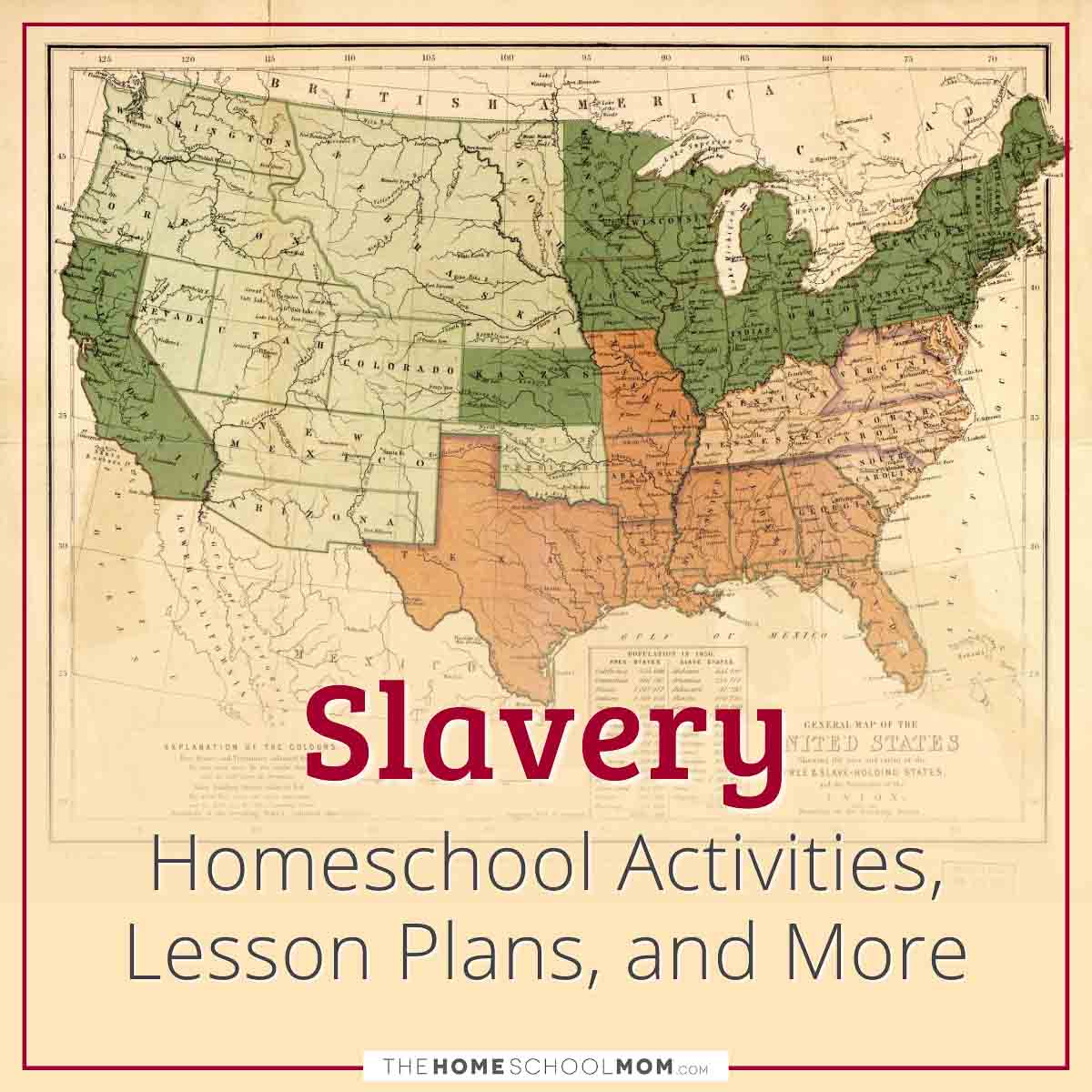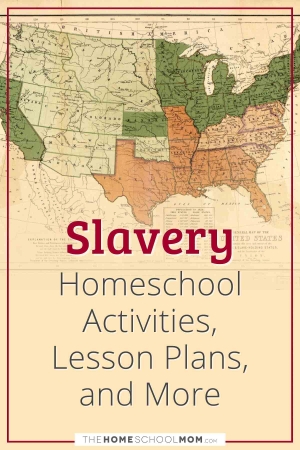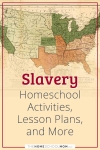Activities, Lesson Plans, and More
- Y—Young (PreK-3rd)
- M—Middle (4th-6th)
- O—Older (7th-12th)
- T—Teacher Resources
The Atlantic Slave Trade (Crash Courses World History)
The 1619 Project Curriculum
The 1619 Project is a 100-page, special issue of the New York Times Magazine published in 2019 that reframes and then details American history following the arrival of the first slave ship to the U.S. in 1916. It digs into infrequently taught history from the nation's founding to modern-day Redlining and Mass Incarceration practices. This curriculum by the Pulitzer Center includes a pdf version of the magazine, reading guides, accompanying podcasts, lessons, activities, and more.

SlaveVoyages
“The SlaveVoyages website is a collaborative digital initiative that compiles and makes publicly accessible records of the largest slave trades in history. Search these records to learn about the broad origins and forced relocations of more than 12 million African people who were sent across the Atlantic in slave ships, and hundreds of thousands more who were trafficked within the Americas. Explore where they were taken, the numerous rebellions that occurred, the horrific loss of life during the voyages, the identities and nationalities of the perpetrators, and much more.”
Mapping Marronage
“Mapping Marronage is an interactive visualization of the trans-Atlantic networks of intellectual and creative exchange created by enslaved people in the 18th and 19th century. It traces the geographic reach, crossings and intersections of letters, autobiographies and creative works authored by enslaved people of African-descent.”
The Freedman’s Bureau Online
The Freedman’s Bureau Online is a website that hosts a massive archive of primary source transcripts for marriages, crime, murder, labor records, and more. The records are searchable by state or record type.
Third Person, First Person: Slave Voices from the Special Collections Library
“This exhibit probes the life experiences of American slaves from the late eighteenth century through the nineteenth century, and examines the enterprise of recovering and preserving African American history of the period. The exhibit showcases the kinds of rare materials that under scrutiny reveal the ambitions, motivations, and struggles of people often presumed mute.” From Duke University.
The Dawn of American Slavery
The Dawn of American Slavery is a project by the Washington Post that catalogs a large collection of articles, interactives, and other resources for learning about slavery.
Zinn Education: Slavery Resources
Zinn Education has a large collection of lessons, activities, and teaching guides for teaching about slavery. Includes primary sources, images, and documents covering topics like resistance, abolition, and the experiences of enslaved individuals in history.
Teaching Hard History: American Slavery
This comprehensive teaching framework from Learning for Justice details the impacts of slavery, resistance efforts, and the legacy of racial inequalities. It provides age-appropriate resources for grades K-5 and 6-12.
Talking to Children About the History of Slavery in the United States: A Resource for Parents and Caregivers
This article from Learning for Justice provides practical tips for navigating age-appropriate discussions with children about slavery.
Enslaved: Peoples of the Historical Slave Trade
Enslaved: Peoples of the Historical Slave Trade (Enslaved.org) is a collaborative digital project by several institutions that provides a large database of resources for learning about the historical slave trade and hosts stories of the lives of those enslaved.
National Underground Railroad Freedom Center
If you can’t visit the National Underground Railroad Freedom Center in Cincinnati, OH, its website hosts a large number of educational resources and digital exhibits for learning about the Underground Railroad, the Transatlantic Slave Trade, modern human trafficking issues, and more.
Voices from the Days of Slavery: Freed People Tell Their Stories
Voices Remembering Slavery: Freed People Tell Their Stories is a digital exhibition from the Library of Congress that features interviews from 22 former enslaved people. The interviews were conducted between 1932 and 1975, and discuss slavery, slaveholders, coercion of slaves, their families, and freedom.
Born in Slavery: Slave Narratives from the Federal Writers' Project, 1936 to 1938
Born in Slavery: Slave Narratives from the Federal Writers' Project, 1936-1938 is a digital collection by the Library of Congress that “contains more than 2,300 first-person accounts of slavery and 500 black-and-white photographs of former slaves. These narratives were collected in the 1930s as part of the Federal Writers' Project (FWP) of the Works Progress Administration, later renamed Work Projects Administration (WPA).”
Black History Pages: Slavery Resources
A list of educational websites from BlackHistoryPages.com that focuses on slavery.
National Geographic Slavery Resource Library
National Geographic has a large collection of lessons, maps, articles, interactives, and other resources for teaching K-12 students about slavery.
Gold Chains: The Hidden History of Slavery in California
Gold Chains is a digital project by the ACLU of Northern California that explores the history of slavery in California through topics like African heritage, the struggle for freedom, and cultural resistance.
The History of American Slavery Podcast
The History of American Slavery is a podcast by Slate writers Rebecca Onion and Jamelle Bouie that explores the history of slavery in America and its lasting impacts on today’s society.
Perspectives on the Slave Narrative Lesson Plan
This lesson plan from EDSITEment introduces students to one of the most widely-read genres of 19th-century American literature and an important influence within the African American literary tradition even today. For grades 9-12.
PBS Collection of Slavery and Emancipation Resources
Large list of resources (including primary sources) relating to abolitionism, slavery, and emancipation.
Booker T. Washington - Lesson Plans & Teacher Guides
A collection of lesson plans for grades 4-12 students from the National Parks Service. Lessons include: War on the Home Front, Clash of the Titans, and What is Freedom?
Slavery and the Underground Railroad
This activity from A to Z Teacher Stuff uses Follow the Drinking Gourd to discuss the Underground Railroad. For grades 3-5.
Frederick Douglass National Historic Site
Born into slavery, Frederick Douglass was a runaway slave, abolitionist, civil rights advocate, author and statesmen. Visitors to the site learn about Frederick Douglass' efforts to abolish slavery and his struggle for rights for all oppressed people. The National Parks Website has photos, lessons, and other resources for those who can’t visit in person.
The Constitution for Kids - Grades 4 - 7
Includes information on the basics, history, slavery, the Bill of Rights Women and how it all works together. For grades 4-7 from USConstitution.net.
The Constitution for Kids: 8th - 12th Grade
Includes information on the basics, history, slavery, the Bill of Rights Women and how it all works together. For grades 8-12 from USConstitution.net.
Teachers' Guide to Follow the Drinking Gourd
Follow the Drinking Gourd, a song published in 1928 by H.B. Parks, encodes instructions for enslaved peoples to escape to freedom using the Underground Railroad. This site contains lyric meanings, astronomy information and activities, and worksheets for elementary, middle school, and high school students.
Did Quilts hold codes to the Underground Railroad?
An article from National Geographic that explores the symbols and codes that two historians say enslaved people may have used to navigate the Underground Railroad.




